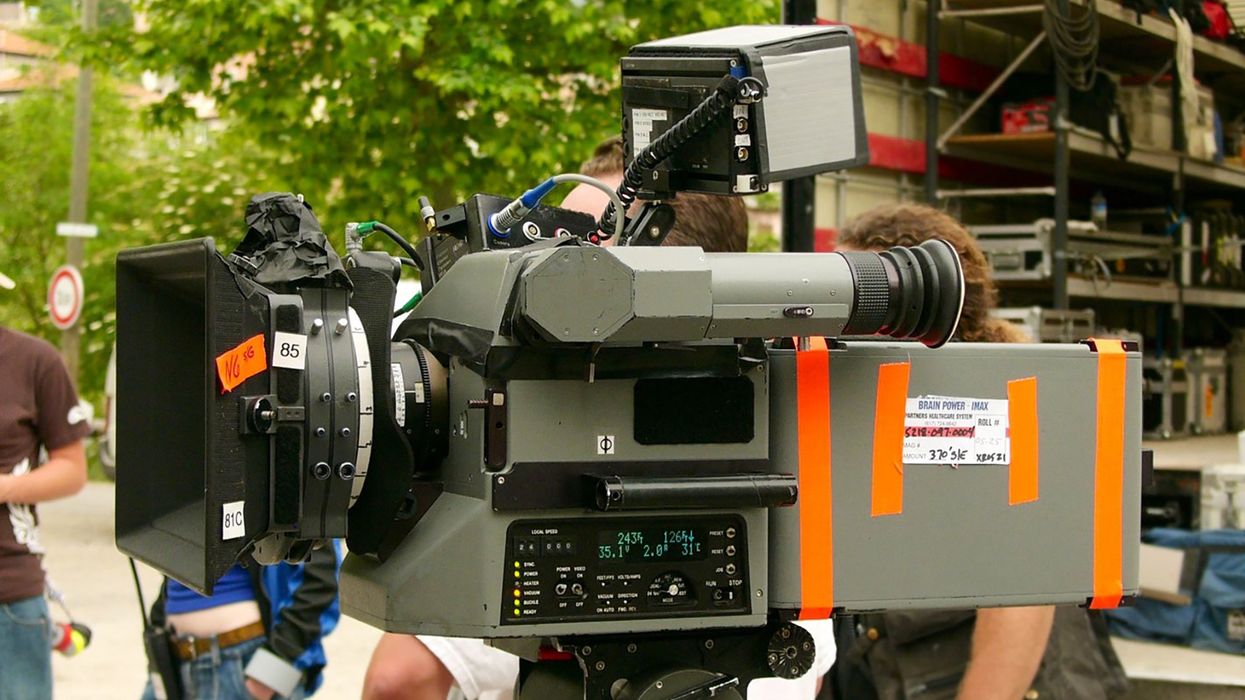Large-Format Cinematography Goes Giant with New IMAX Film Cameras
IMAX teams with Christopher Nolan and Jordan Peele to release four new 65mm cameras to tackle modern cinema. Is film getting a comeback in the digital world?

As much as people may think that film is dead, traditional celluloid never left the building. Frankly, it probably owns the building, and digital is just renting the space.
Even with the meteoric leaps that digital formats have made in the last decade, it seems that shooting on film can never be replaced.
And IMAX seems to agree, which is why it is partnering with some incredible filmmakers and companies to make four new cameras.
But why does that matter to everyone else trying to shoot their movies? Let’s dive in and get some more details on this new gear.

Four New IMAX Cameras
Initially reported by Variety and Deadline, IMAX announced its plans to not only modernize its product line but to develop at least four new state-of-the-art film cameras over the next two years.
This will grow its existing product line by 50%, with the first new camera planned for late 2023.
IMAX will be collaborating with Kodak, Panavision, and Fotokem to develop an efficient pipeline for film stock manufacturing, post-production services, and camera maintenance.

“But what are the new features?” I hear you say.
All we know for now is that the new cameras will utilize IMAX’s proprietary 65mm film format, but will be quieter and include features to enhance usability on set.
This is great, since IMAX cameras are unwieldy and were never meant to be used for narrative productions. Rigging them for Christopher Nolan’s Tenet and Interstellar was a feat in and of itself. The current IMAX cameras are also loud, and shooting dialogue scenes is near impossible without ADR.

That is why IMAX is partnering with Nolan and Jordan Peele, who also shot his upcoming film Nope on the current generation of IMAX cameras. In addition, cinematographers such as Hoyte van Hoytema (Tenet), Linus Sandgren (No Time To Die), Rachel Morrison (Black Panther), Bradford Young (Arrival), and Dan Mindel (Star Trek) are also weighing in on the development.
But we can’t talk about cameras without talking about lenses and film stock, can we?
IMAX Lenses and Film Format
When shooting Interstellar on IMAX, the lenses used were prototypes that had never been seen before. On Tenet, the creative team used custom-built Panavision Sphero 80mm primes, along with a pair of converted Hasselblad in 50mm and 80mm.

To combat this lens issue, IMAX will be updating its lenses as part of the program to increase their speed and usability on set.
Kodak is also stepping up to provide enhanced technical support and manufacturing of the 65mm film stock. As more and more filmmakers get access to such a large format, the price should go down, in turn opening the door for more filmmakers to make use of IMAX cameras and film.
Why IMAX Matters to All Filmmakers
Proponents of the digital format have been able to reproduce film almost perfectly. Yet the traditional format brings with it a workflow and mindset that cannot be replicated with its electronic counterpart.
People respect film. Sometimes to a fault. But we can’t overlook the evidence that when shooting on film, the set feels different. Even the final product and performances are elevated. However, the latter can be subjective.
Even though regular filmmakers may never get a chance to shoot on IMAX, the technology, on-set practices, and inspiration will end up trickling down the creative hierarchy.
We as filmmakers always look at the best gear and the best films to light the fire of creativity within. The films that will come from the new IMAX cameras are sure to set a new standard that creatives will all try to achieve.
And in our minds, that is a good thing.
Source: Variety











